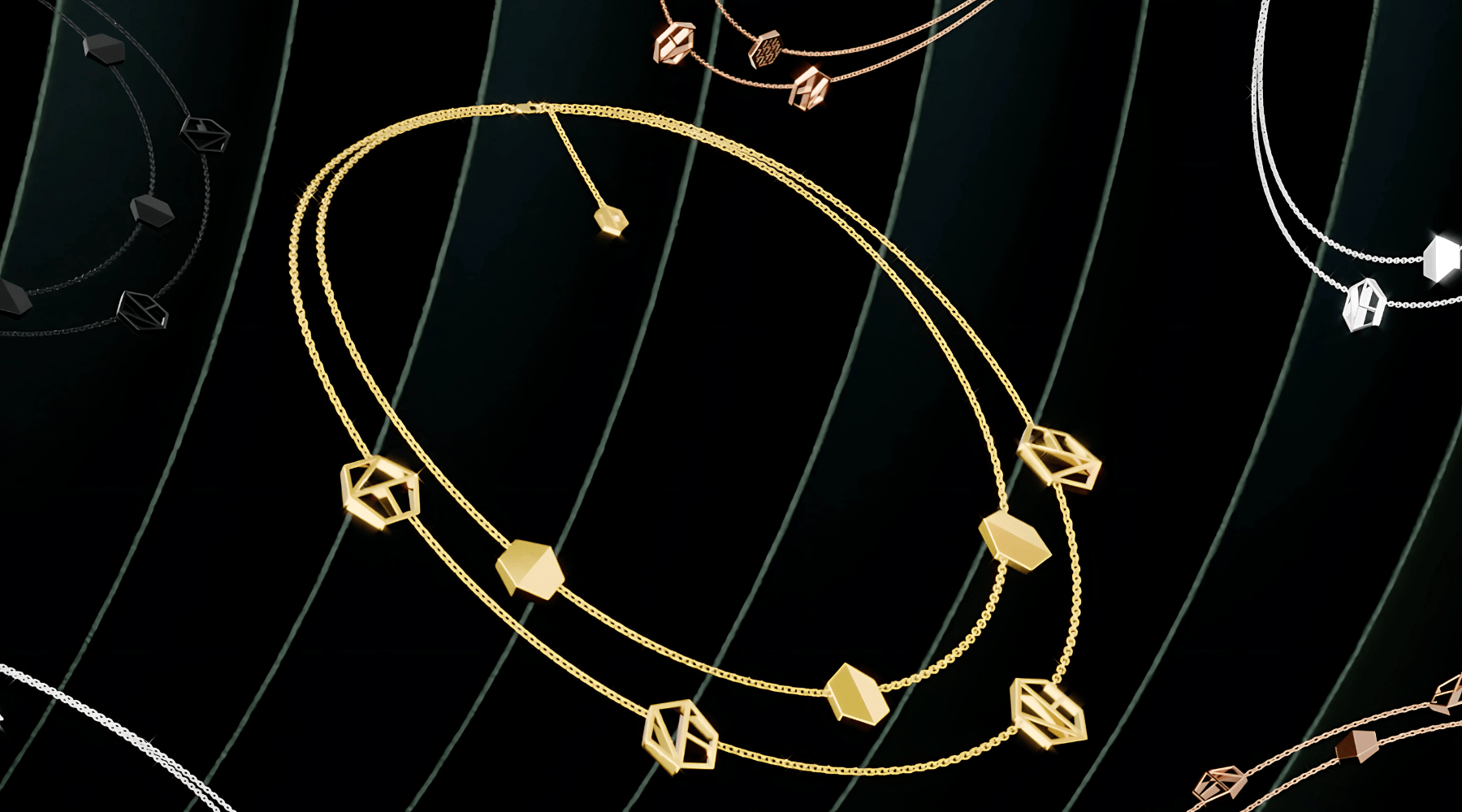Key Points of the History of Jewelry
-
Prehistoric Origins: Jewelry began with the use of natural materials like shells, bones, and stones, serving as symbols of status, protection, and spirituality.
-
Ancient Egyptian Craftsmanship: Around 3000 BCE, Egyptians used gold and gemstones to create iconic pieces like scarab amulets and broad collars, often tied to divine beliefs and burial rituals.
-
Mesopotamian Innovations: Mesopotamians crafted intricate designs using gold, silver, and gemstones, showcasing both decorative and functional purposes linked to social rank.
-
Gold as a Symbol: Gold became synonymous with wealth and power, particularly in ancient Egypt and Rome, where advanced techniques like filigree and granulation were pioneered.
-
Renaissance Revival: The Renaissance period brought a resurgence of Classical styles, with advancements in enameling and gemstone cutting adding vibrancy to designs.
-
Art Nouveau Movement: Inspired by nature, this period emphasized organic shapes, flowing lines, and imaginative motifs, shifting away from rigid designs.
-
Modern Artistic Movements: The 20th century saw diverse influences such as Art Deco and Minimalism, blending technology and artistry to redefine jewelry design.
-
Contemporary Trends: Today’s jewelry emphasizes boldness and individuality, with unique designs like the Know You Stud Earrings and Embrace You Choker Necklace by Naude Bourn, showcasing a blend of modern aesthetics and timeless materials.
Jewelry has always been more than mere adornment; it is an expression of culture, artistry, and personal identity. From the earliest civilizations to modern fashion, jewelry’s evolution tells a fascinating story of human creativity and societal values. In this blog post, we will traverse through the significant milestones in jewelry history, highlighting how this timeless art form has shaped and been shaped by the world around it.
Early Beginnings: The Dawn of Adornment
The origins of jewelry date back thousands of years, with the earliest evidence emerging from prehistoric times. Archaeological findings suggest that ancient humans adorned themselves with natural materials such as shells, bones, and stones. These primitive pieces were likely used for more than just decoration; they served as symbols of status, protection, and spirituality.
Ancient Civilizations and Their Splendor
Egyptian Elegance: Around 3000 BCE, the ancient Egyptians began crafting intricate jewelry using gold, gemstones, and glass beads. Jewelry was deeply embedded in their culture, often associated with the divine and used in burial rituals. The famous scarab beetle amulets and broad collar necklaces are quintessential examples of Egyptian craftsmanship.
Mesopotamian Mastery: Concurrently, the Mesopotamians were developing their own jewelry traditions. They utilized gold, silver, and precious stones like lapis lazuli and carnelian to create elaborate pieces. Jewelry served both decorative and functional purposes, often indicating social rank and wealth.
Gold as a Major Material: A Symbol of Wealth and Power
Gold has been a prized material for jewelry making for centuries, symbolizing wealth, power, and beauty. Its discovery and subsequent use in jewelry can be traced back to several ancient civilizations.
Egyptian Gold: The Metal of the Gods
The ancient Egyptians' affinity for gold was unparalleled. They believed it was the flesh of the gods and a symbol of eternal life. Their sophisticated techniques in working with gold set the stage for future advancements in jewelry making. Gold jewelry was not only worn in life but also placed in tombs to accompany the deceased into the afterlife.
Roman Refinement
The Romans further advanced jewelry craftsmanship by incorporating gold into their designs. They introduced new techniques such as filigree and granulation, creating intricate patterns and textures. Roman jewelry often featured cameos and intaglios, showcasing their skill in carving gemstones.
Milestones in Jewelry History: An Evolution of Style and Craftsmanship
Throughout history, jewelry has evolved in style and craftsmanship, reflecting the changing tastes and technological advancements of each era.
Renaissance Revival
The Renaissance period (14th-17th centuries) saw a resurgence of Classical influences in jewelry. Artists and goldsmiths created elaborate pieces that were both ornamental and symbolic. Enameling and gemstone cutting techniques reached new heights, resulting in vibrant and detailed jewelry.
Art Nouveau: Nature's Inspiration
In the late 19th and early 20th centuries, the Art Nouveau movement brought a fresh perspective to jewelry design. Inspired by nature, artisans like René Lalique crafted pieces that featured flowing lines, organic shapes, and natural motifs. This period marked a departure from the rigid forms of the past, embracing a more fluid and imaginative approach.
Modernism and Beyond
The 20th century introduced various artistic movements that influenced jewelry design, including Art Deco, Surrealism, and Minimalism. Each movement brought unique aesthetics and philosophies, pushing the boundaries of traditional jewelry. Today, contemporary designers continue to innovate, blending technology with artistry to create pieces that resonate with modern sensibilities.
Current Trends in Jewelry: Bold, Unique, and Extraordinary
The biggest trend in the world of jewelry today is bold, unique, and extraordinary pieces that reflect individuality and personal style. Two modern creations that perfectly embody this spirit are the Know You 18k Rose Gold Stud Earrings and the Embrace You 18k Yellow Gold Layered Choker Necklace by Naude Bourn.
Know You 18k Rose Gold Stud Earrings
The Know You Stud Earrings celebrate modern minimalism with an elegant design that radiates sophistication. Crafted from 18k rose gold, these studs are perfect for everyday wear or special occasions. Their subtle yet striking design captures the essence of self-awareness and individuality, paying homage to jewelry's long history as a medium of personal expression.

18k Gold Earrings by Naude Bourn, blending modern ethical craftsmanship with
timeless artistry, symbolizing personal evolution and self-discovery.
Embrace You 18k Yellow Gold Layered Choker Necklace
The Embrace You Choker Necklace is a statement of contemporary artistry and timeless elegance. Made from 18k yellow gold, this layered necklace merges classic materials with a modern aesthetic. Its layered design creates depth and visual interest, while its golden hue reflects the opulence of ancient civilizations that revered gold as a divine material. This piece is a modern heirloom that connects the wearer to centuries of jewelry craftsmanship.

18k Gold Choker Necklace by Naude Bourn ethically crafted with timeless artistry,
inspiring fearless transformation and personal empowerment.
Embrace the Legacy of Jewelry
The history of jewelry is a rich tapestry of culture, artistry, and symbolism. From the natural materials of ancient times to the refined techniques of contemporary design, jewelry continues to captivate and inspire us. As you explore your own journey with jewelry, consider how each piece connects you to a timeless tradition of self-expression and artistry.
Discover more exclusive designs like the Know You Stud Earrings and Embrace You Choker Necklace at Naude Bourn. Celebrate the enduring legacy of jewelry and make a bold statement with pieces that reflect your unique story.





